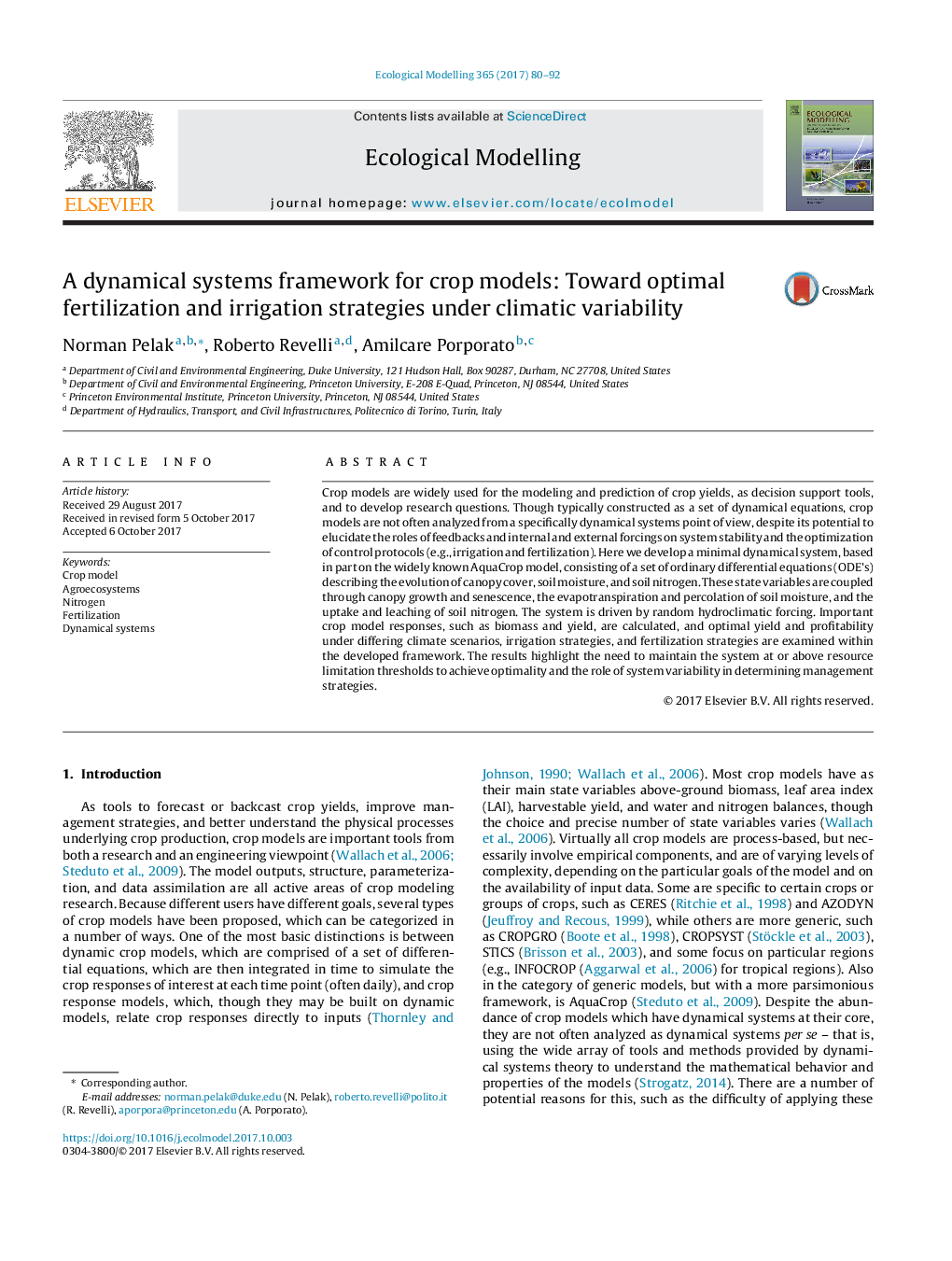| Article ID | Journal | Published Year | Pages | File Type |
|---|---|---|---|---|
| 5741970 | Ecological Modelling | 2017 | 13 Pages |
â¢Crop models are not typically examined in a dynamical systems framework.â¢A simple crop model to explore this framework is proposed.â¢Results highlight the importance of resource limitation thresholds for optimality.â¢Optimal strategies must also be robust to random hydroclimatic forcing.
Crop models are widely used for the modeling and prediction of crop yields, as decision support tools, and to develop research questions. Though typically constructed as a set of dynamical equations, crop models are not often analyzed from a specifically dynamical systems point of view, despite its potential to elucidate the roles of feedbacks and internal and external forcings on system stability and the optimization of control protocols (e.g., irrigation and fertilization). Here we develop a minimal dynamical system, based in part on the widely known AquaCrop model, consisting of a set of ordinary differential equations (ODE's) describing the evolution of canopy cover, soil moisture, and soil nitrogen. These state variables are coupled through canopy growth and senescence, the evapotranspiration and percolation of soil moisture, and the uptake and leaching of soil nitrogen. The system is driven by random hydroclimatic forcing. Important crop model responses, such as biomass and yield, are calculated, and optimal yield and profitability under differing climate scenarios, irrigation strategies, and fertilization strategies are examined within the developed framework. The results highlight the need to maintain the system at or above resource limitation thresholds to achieve optimality and the role of system variability in determining management strategies.
